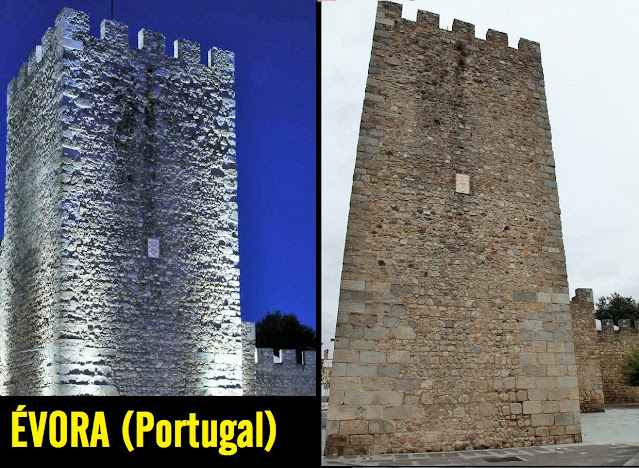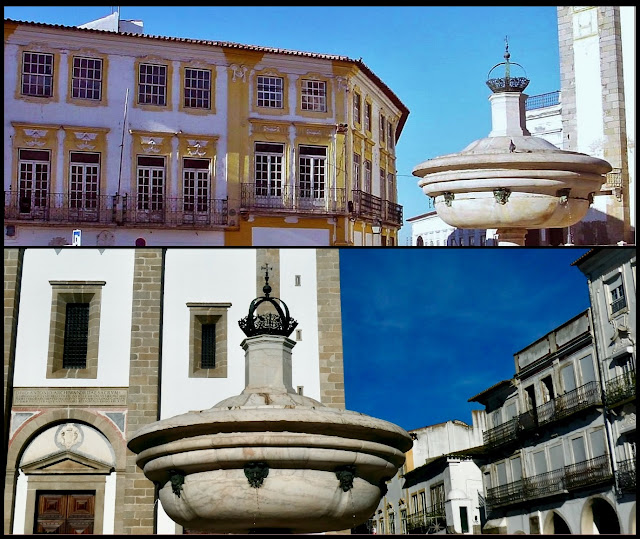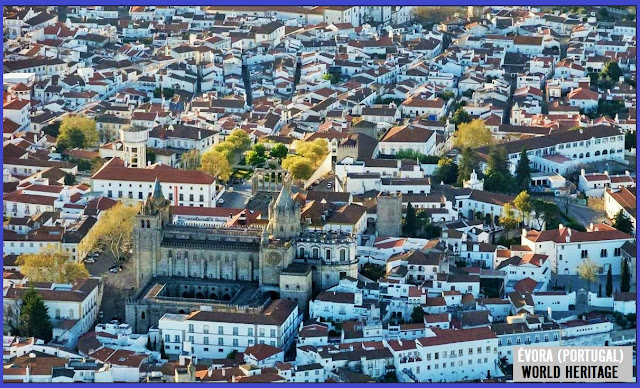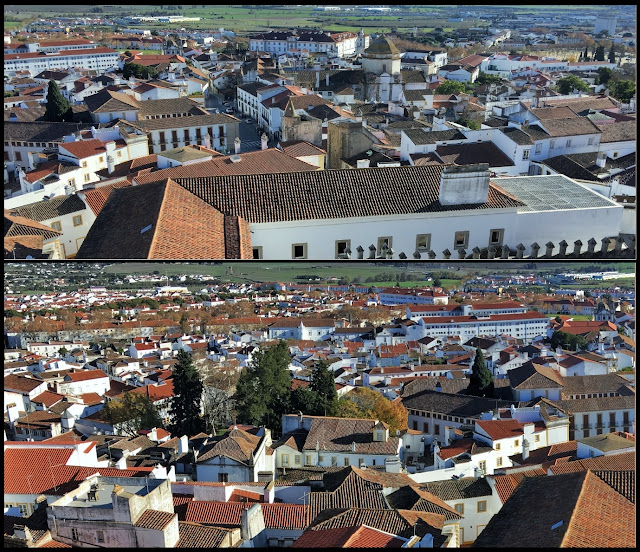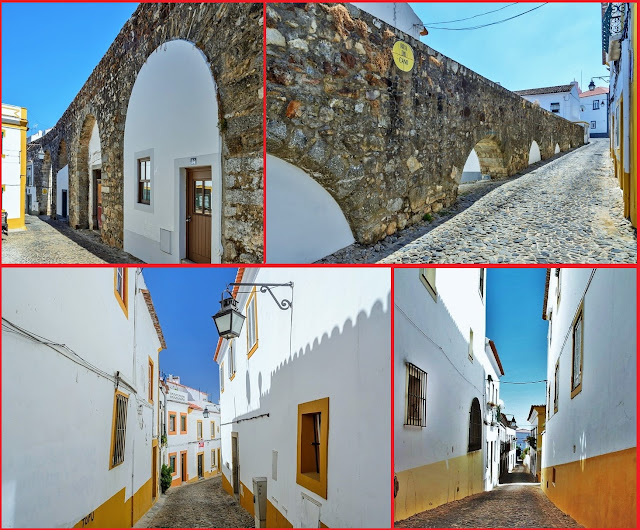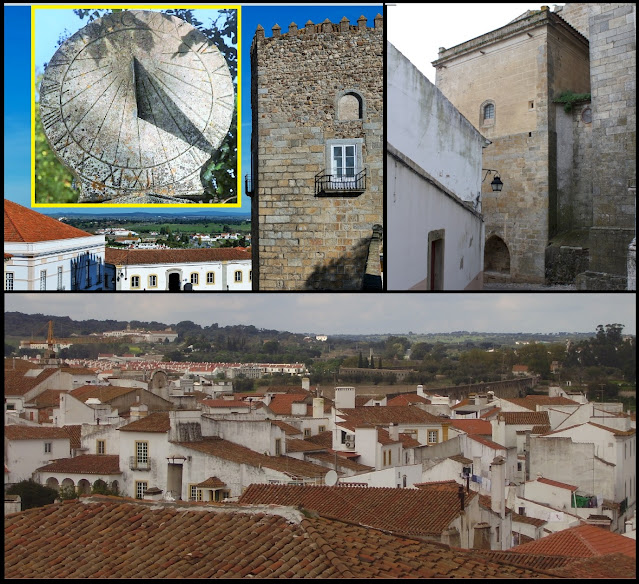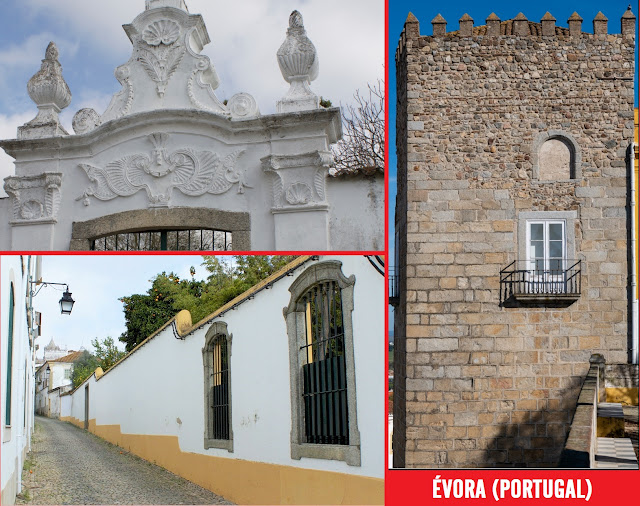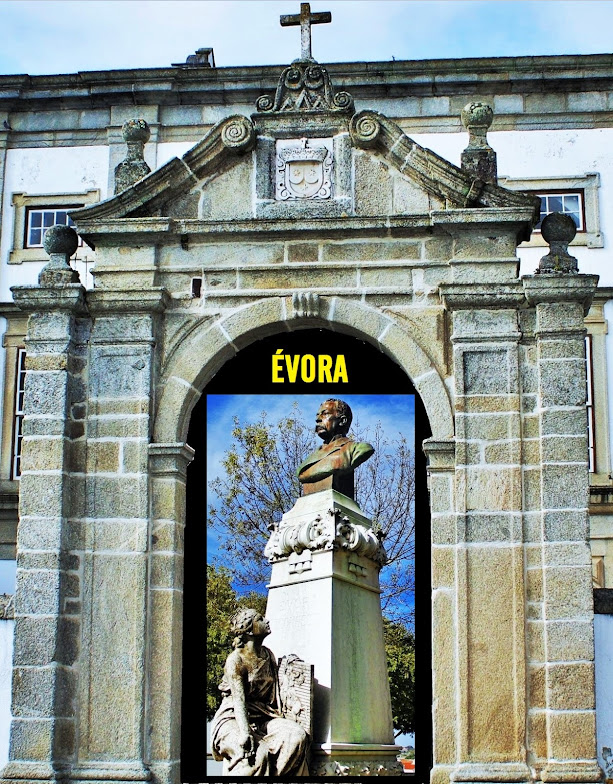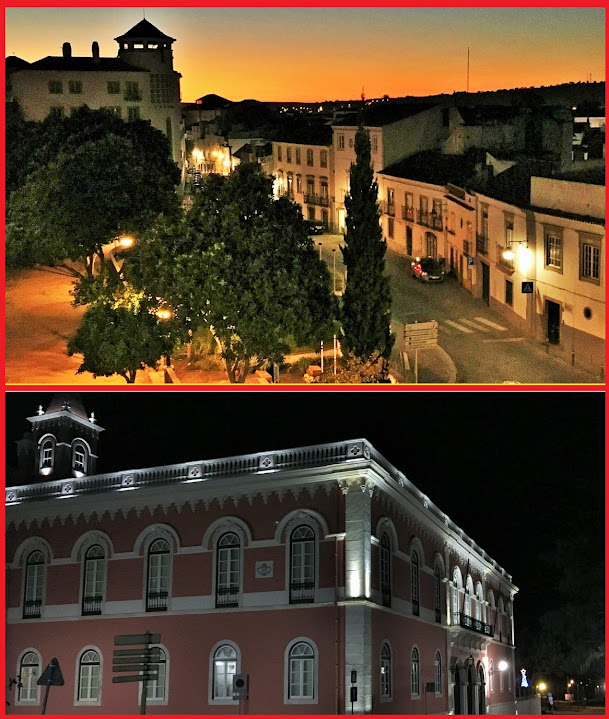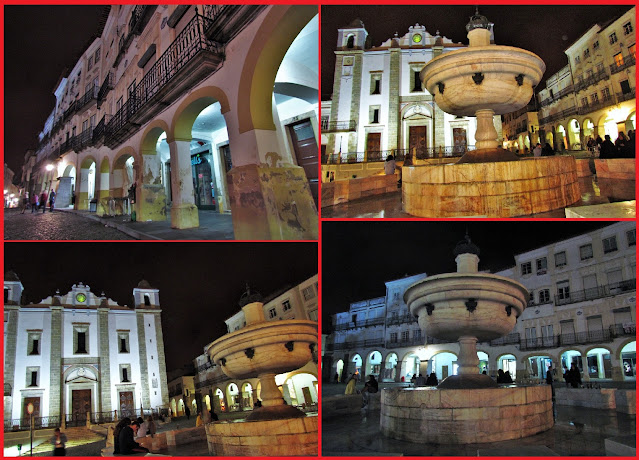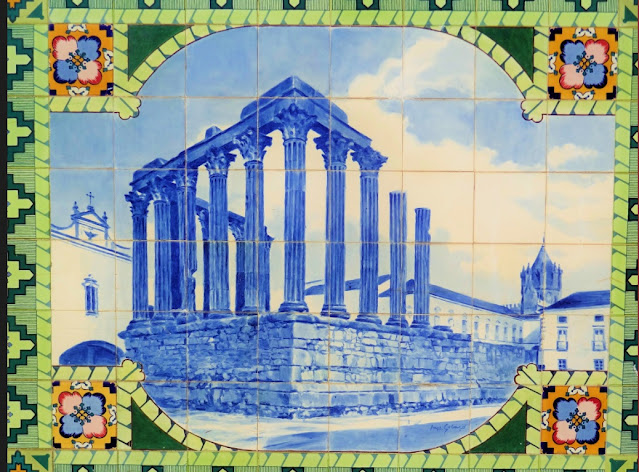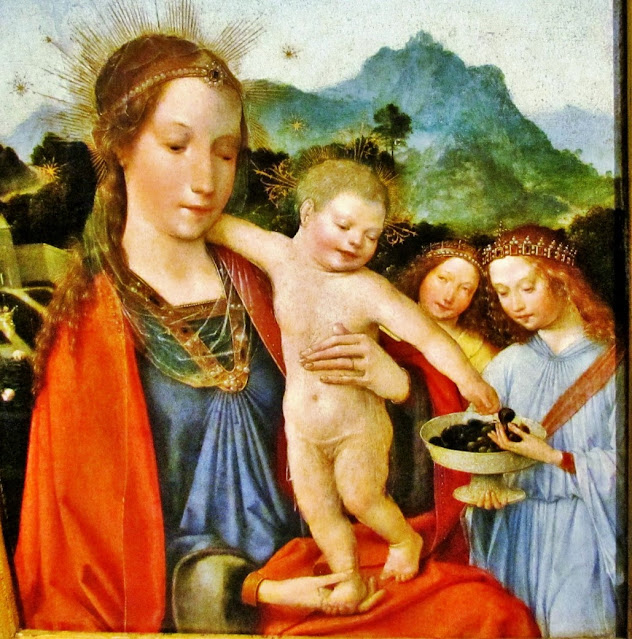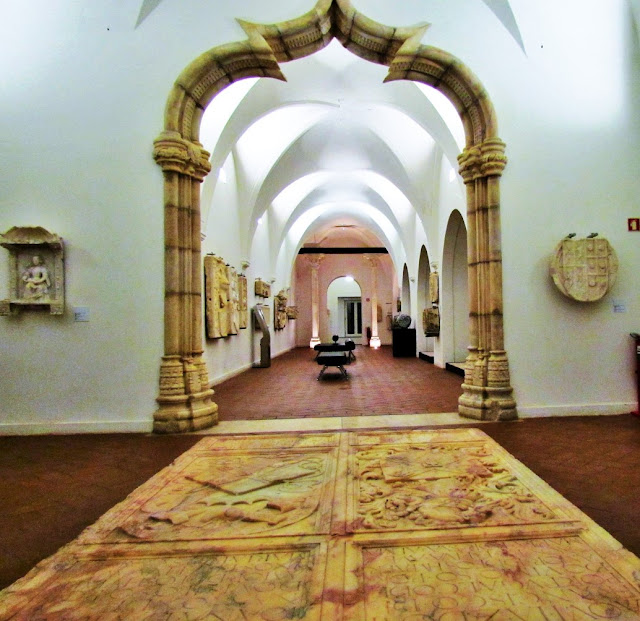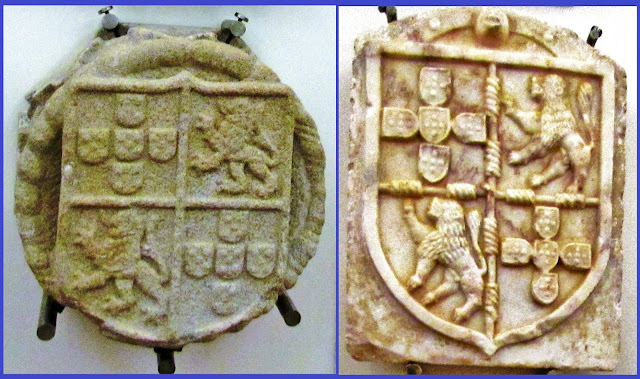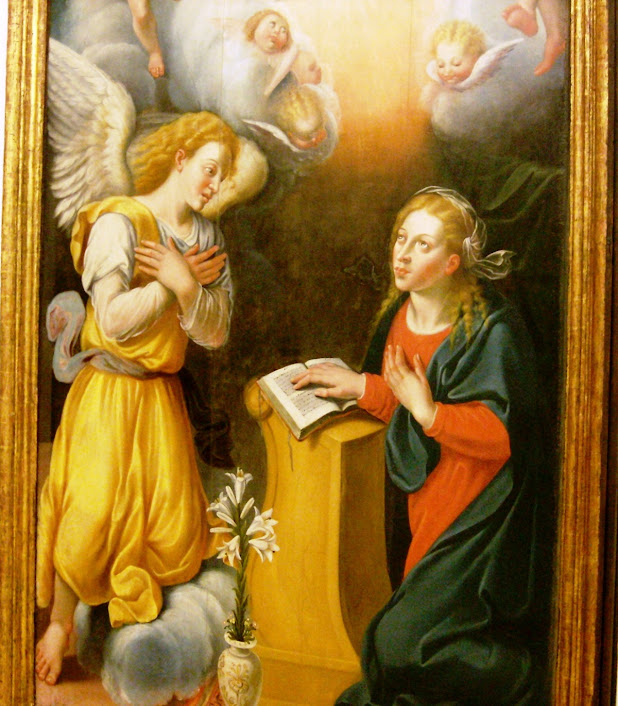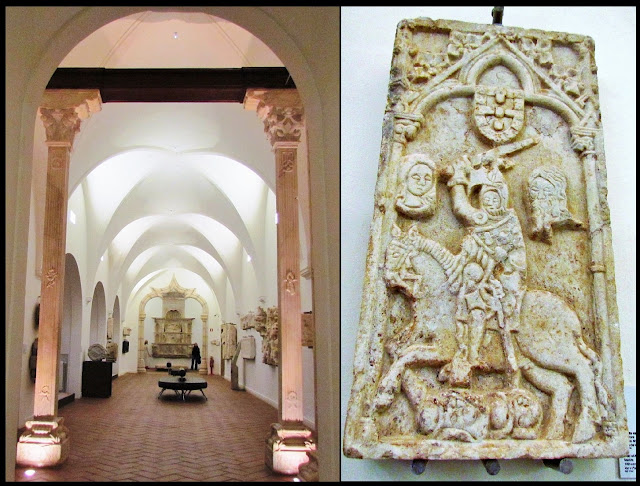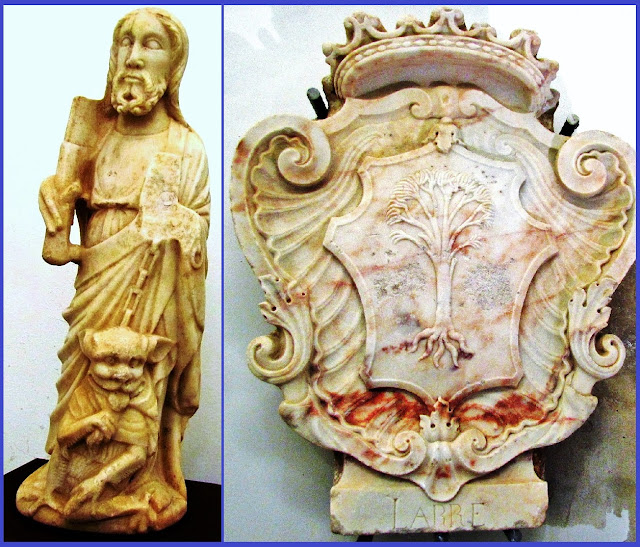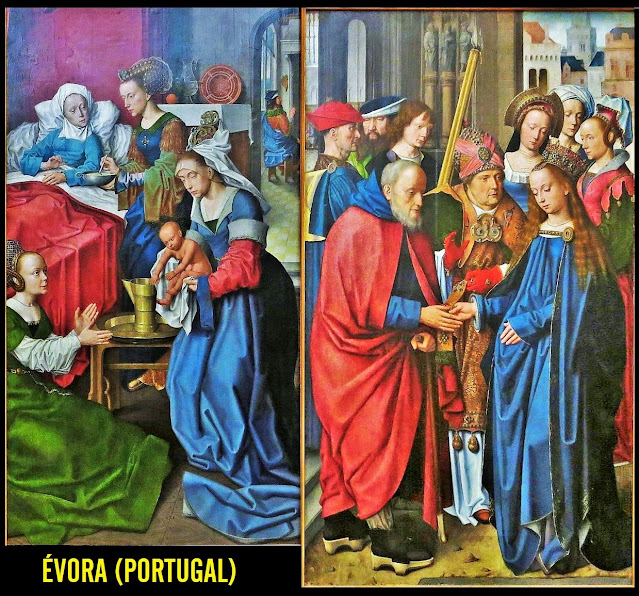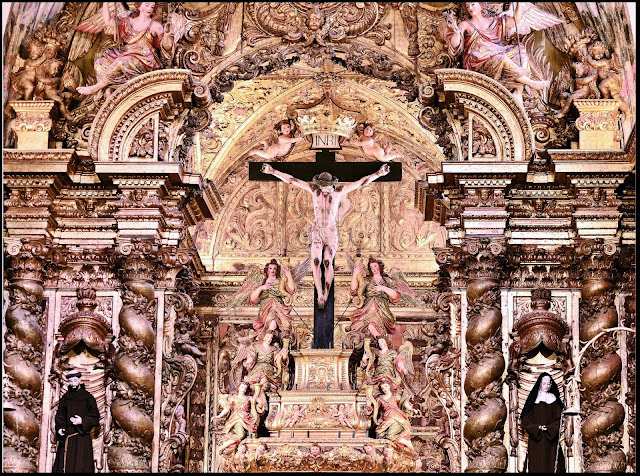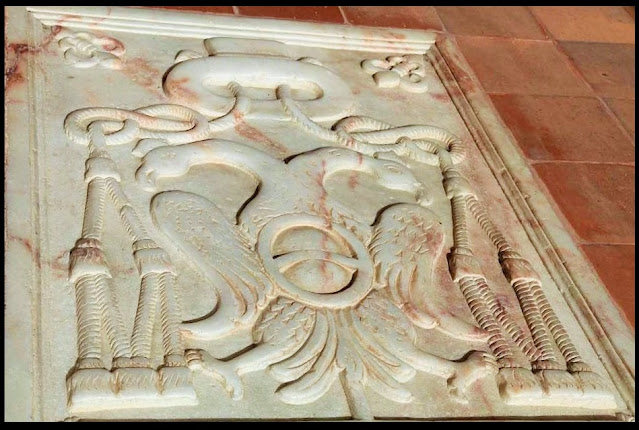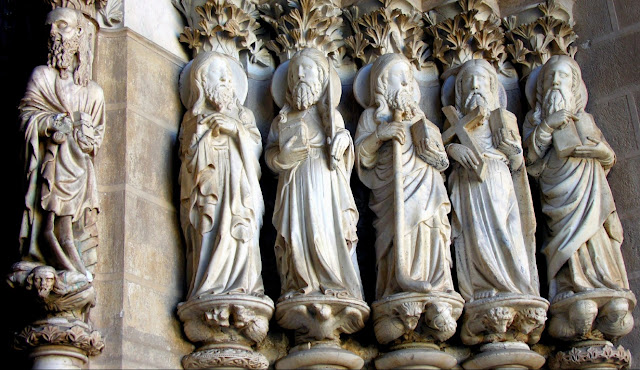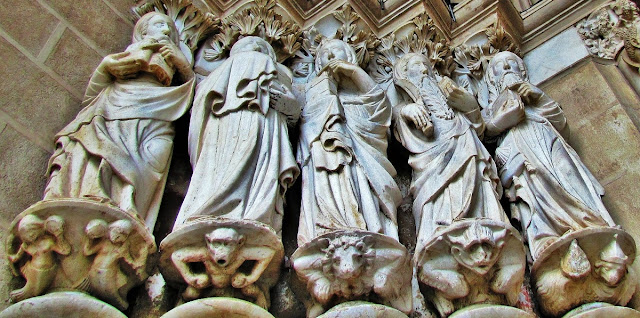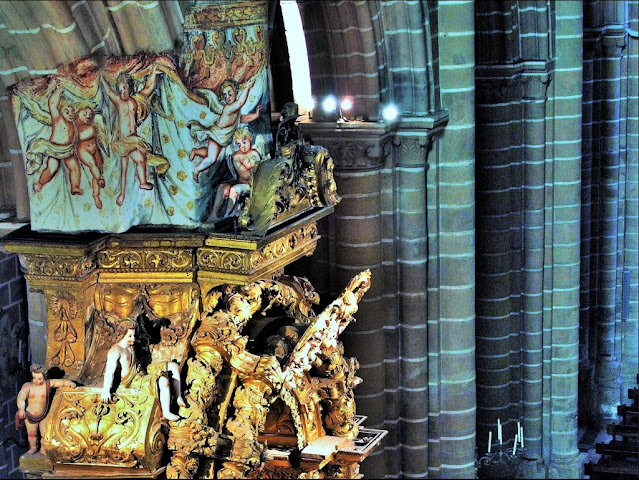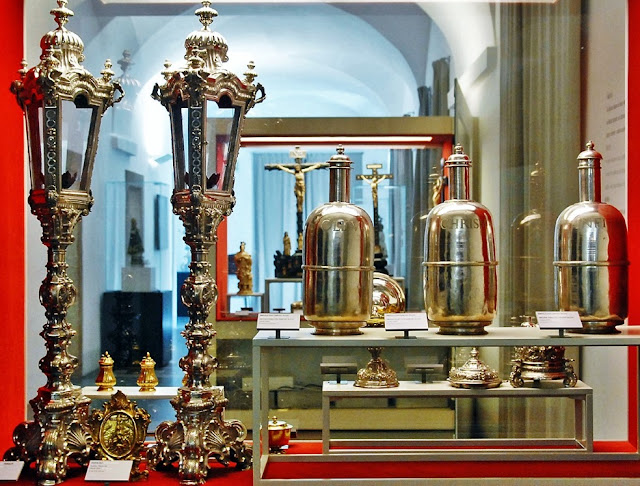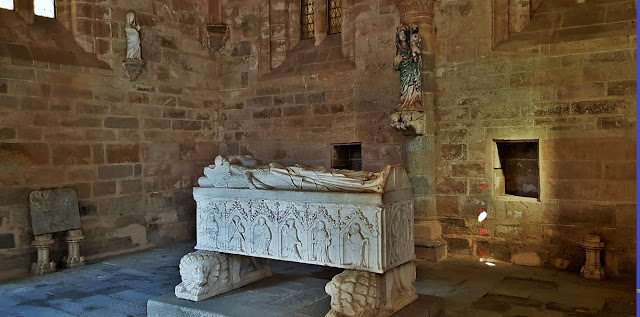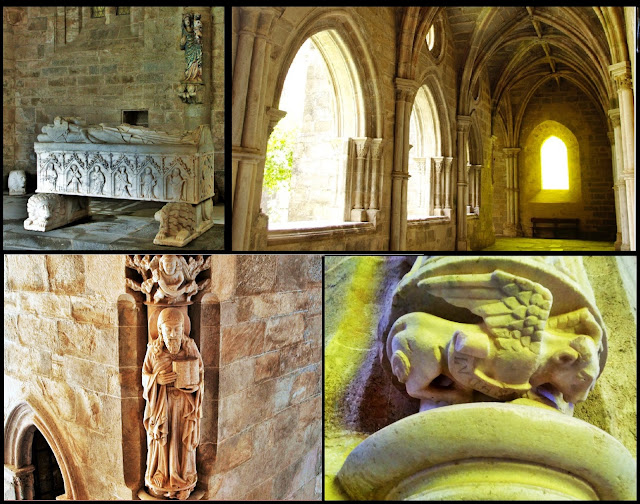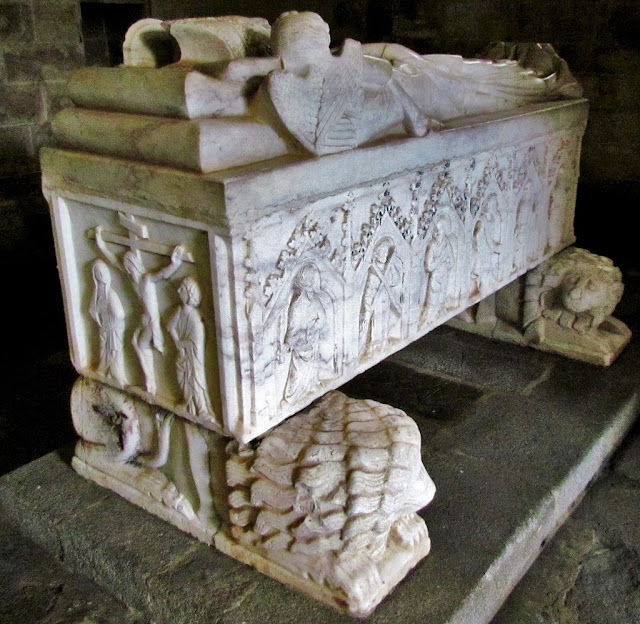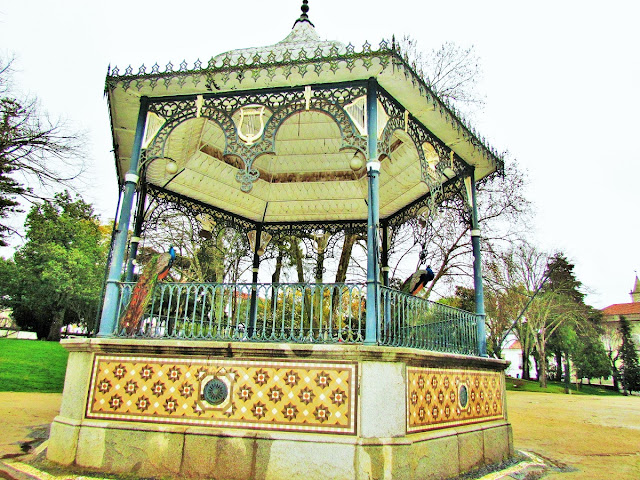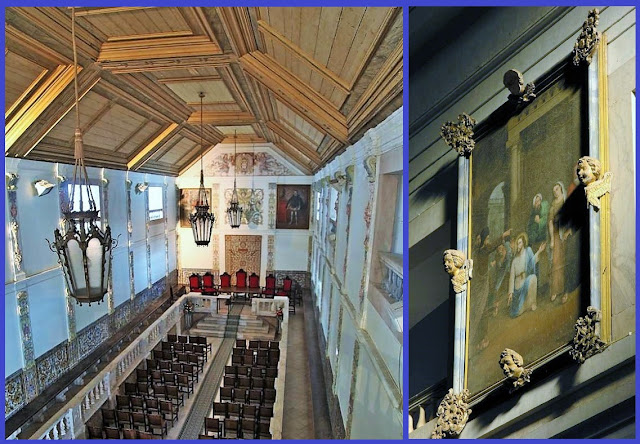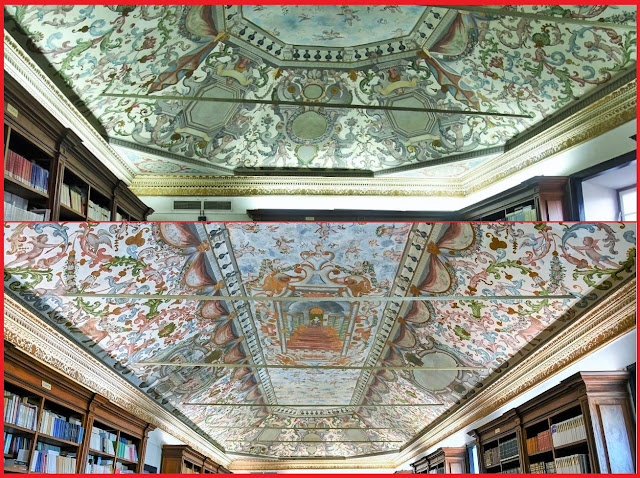ÉVORA
N 38º 34' 15''; W 7º 54' 34''
Due to its well-preserved old town center, still partially enclosed by medieval walls, and many monuments dating from various historical periods, including a Roman Temple, Évora is a UNESCO World Heritage site. It is also a member of the Most Ancient European Towns Network.
Évora being inland leads it to be one of Portugal's hottest cities prone to strong heat waves. Even so, it is milder than areas farther inland across the Spanish border.
Évora has a history dating back more than five millennia.
It was known as Ebora by the Celtici, a tribal confederacy, south of the Lusitanians (and of Tagus river), who made the town their regional capital. The Romans conquered the town in 57 BC and expanded it into a walled town. During the barbarian invasions, Évora came under the rule of the Visigothic king Leovigild in 584. The town was later raised to the status of a cathedral city. Nevertheless, this was a time of decline and very few artifacts from this period remain.
In 715, the city was conquered by the Moors. Évora was wrested from the Moors through a surprise attack by Gerald the Fearless (Geraldo Sem Pavor) in September 1165. The town came under the rule of the Portuguese king Afonso I in 1166. It then flourished as one of the most dynamic cities in the Kingdom of Portugal during the Middle Ages, especially in the 15th century. The court of the first and second dynasties resided here for long periods, constructing palaces, monuments, and religious buildings. Évora became the scene for many royal weddings and a site where many important decisions were made.
The Battle of Évora was fought on 29 July 1808 during the Peninsular War. An outnumbered Portuguese-Spanish force of 2,500, assisted by poorly armed peasant militiamen, tried to stop a French-Spanish division commanded by Louis Henri Loison but it was routed. Led by the hated Loison, known as Maneta or One-Hand, the French went on to storm the town which was defended by soldiers, militiamen, and armed townsmen. Breaking into the town, the attackers slaughtered combatants and non-combatants alike before thoroughly pillaging the place. The French inflicted as many as 8,000 casualties while suffering only 290 of their own.
In 1834, Évora was the site of the surrender of the forces of King Miguel I, which marked the end of the Liberal Wars. The many monuments erected by major artists of each period now testify to Évora's lively cultural and rich artistic and historical heritage. The variety of architectural styles (Romanesque, Gothic, Manueline, Renaissance, Baroque), the palaces, and the picturesque labyrinth of squares and narrow streets of the city center are all part of the rich heritage of this museum-city.
Physical geography
Évora (altitude 300 m) is situated in Alentejo, a large region of wide plains on the south of Portugal, bordered on the North by the Tagus River and on the South by the region of Algarve. The city is 140 km (87 mi) from the capital city Lisbon, and 80 km (50 mi) from Badajoz at the Spanish border. It is the chief city of the region. The seat of the municipality is the city of Évora, composed of the civil parishes of Évora (São Mamede, Sé, São Pedro e Santo Antão) in the historical center and the urban parishes of Bacelo e Senhora da Saúde and Malagueira e Horta das Figueiras outside the ancient city walls where most of the population in fact reside. The remaining civil parishes in the municipality are rural or suburban and do not form part of the city for statistical purposes. The city's historical center has about 4,000 buildings and an area of 1.05 km2 (0.41 sq mi).
Climate
Évora has a hot-summer Mediterranean climate (Köppen: Csa) with hot, dry summers and mild, moist winters. Its location in the interior of southern Portugal makes it subject to frequent droughts and desertification. As is typical of the interior Alentejo, Évora is prone to severe heat extremes with an all-time record of 46.0 °C (114.8 °F). However, the average summer high is usually around 30 °C (86 °F), which is significantly less severe heat than the one found in nearby Andalusia, Spain. This is due to low-scale maritime effects caused by its relative proximity to the Atlantic Ocean, which also causes seasonal lag predominantly during the warmer period, with night-time temperatures being milder in September than June as well as in October compared with May. Frosts in winter are frequent but not usually severe, snow falling only twice a decade.
Economy
Évora is the chief city of the Alentejo region, and plays a role as an important agricultural and services center. It is home to several institutions with great importance for the region, like the state-run University of Évora and district hospital. Évora has tried to develop the aerospace sector, and has been chosen to host the Portuguese Aeronautical Cluster after Brazilian aircraft manufacturer giant Embraer decided to establish in the city two factories (one of the metallic structures and other of composite structures) for the production of aircraft parts along with its European Engineering Center. The city's aeronautical park, which includes an aerodrome, is about to receive a number of other investments related to the aeronautical industry, amongst which the most noteworthy investments are the ones of Lauak and Mecachrome.
Due to its extensive historical and cultural importance, Évora, as well as the surrounding area, has seen in the past few years a great increase in the tourism sector, which fomented the creation of many hotels, bed-and-breakfasts and various other styles of accommodation. Some of its most visited sites include the Roman Temple of Évora, the Chapel of Bones, the Cathedral of Évora, Évora's Museum, and its historical center.
Transport
Évora can be reached by bus or train, with the construction of a high-speed train link to Lisbon and Madrid is planned.
There is a small airfield, the Évora Municipal Airport, currently without commercial airline service. The closest major airports are Beja, Lisbon, Faro, and Badajoz.
THE WALLS OF ÉVORA
The walls of the Roman and Arabian fences form a defensive ensemble built over centuries. The oldest fence was built in the 3rd century, during the Romanization period. It surrounded an area of approximately ten hectares and was nearly two thousand meters long. The D. Isabel Gate, also called the Roman Arch of Évora, represents a legacy of that time.
The quadrangular tower, also called the Visigothic king, is attributed to the Visigothic era, which is attributed to its construction in the 7th century, but little is known about the transformations that the wall underwent at that time. Also unknown is the structure of the fence during the Islamic period, with only a few remnants in the rear area of the See and the Roman Temple.
MAIN SQUARE
(PRAÇA DO GIRALDO)
Evora's main square, with its picturesque stone arches, is flanked by some fine examples of Romanesque and Gothic architecture. This place is central to the city's life and this is where tourists can mingle with locals in the cafes and restaurants which line the square. It is a great place for sitting and watching the world go by.
The square is named after Geraldo Geraldes, who in 1167 expelled the Moors from Evora. In the 13th century, this was a marketplace, and later it became the scene of gruesome and tragic historical events. In 1484 the Duke of Braganza, brother-in-law to King Joao II of Portugal was executed here for treason. In the 16th century, the square was used for Auto-da-Fe ritual burnings of supposed heretics at the order of the Spanish Inquisition.
In the cobbled center of the square is the Fonte Henriquina, a 16th-century Baroque marble fountain that is worth closer inspection. This fountain is thought to have been the source of the Agua de Prata Aqueduto (Aqueduct of Silver Water). Note the crown topping the fountain, which is said to have been placed there on the orders of King Philip II of Spain, husband of Mary I of England. The eight streams of water flowing from the fountain represent the eight streets leading out of the square.
Other interesting features around the square include a building that was once part of the Estus Palace (now housing a tourist office) and the Church of Santo Antão with its unusual, marble high altar.
HISTORIC CENTER
ROMAN TEMPLE
The Roman Temple of Évora, mistakenly known as Temple of Diana, is located in the city of Évora, in Portugal. It is part of the historic city center, which has been classified as a World Heritage Site by UNESCO.
The temple was located at the highest point of the acropolis of the Roman city, originally part of an urban complex known as the forum, which was usually the center of a Roman city, surrounded by a portico. The temple itself was surrounded by a water tank, demonstrating that the aquatic element would be of great importance, from a religious point of view. The complex could also have included a basilica, whose columns shared some characteristics with those of the Roman temple.
ÉVORA MUSEUM
The National Museum Frei Manuel do Cenáculo, commonly known as the Évora Museum, occupies the old Episcopal Palace, next to the Cathedral of Évora, in the heart of the historic center of this city.
The museum's collection, numbered around 20,000 objects, includes pieces of archeology, plastic and decorative arts (painting, sculpture, drawing, jewelry, ceramics, furniture, and textiles), as well as a collection of natural sciences. Both for the quantity and the quality of many of the pieces in its estate, the Museum of Évora, can be considered one of the most important in Portugal.
In the collection of paintings, the so-called Políptico da Sé de Évora stands out, a work of Flemish production, from the end of the 15th century - the beginning of the 16th. The 19 remaining panels of the altarpiece, 13 with scenes from the life of the Virgin Mary and six smaller panels with scenes from the Passion of Christ, show work from a Flemish workshop, not yet determined, influenced by models by the painters Gerard David and Hugo van der Goes.
 |
 |
 |
+
CHAPEL OF THE BONES
The church
The São Francisco Church took nearly 75 years to build; between 1475 and the 1550s. It was built by Franciscan monks during the Counter-Reformation in Gothic style on the site of a Romanesque church from 1226. What was innovative was that the church was built without separate columns. There are seven niches in which an altar can be admired. The walls are covered with Dutch tiles, because Portugal only started making tiles later. The paintings were made by Flemish masters.
There is a baptismal font in the first niche on the left.
The left choir is made in baroque style, the right choir in renaissance style.
Chapel of the Bones
The chapel was built in 1816. About 5000 skulls and bones of former monks were used to make this chapel. Only the altar, floor, and ceiling were not made of bones. At the entrance is a saying: "Nos ossos que aqui estamos pelos vosso esperamos" (our bones here are waiting for yours).
The chapel was built in 1816. About 5000 skulls and bones of former monks were used to make this chapel. Only the altar, floor, and ceiling were not made of bones. At the entrance is a saying: "Nos ossos que aqui estamos pelos vosso esperamos" (our bones here are waiting for yours).
CHURCH OF THE MERCY
(IGREJA DA MISERICÓRDIA)
The "Igreja da Misericórdia" is an important religious monument in the city of Évora, located in Largo da Misericórdia.
The church, with a single nave and sober proportions, presents a majestic set of Baroque art from the 17th and 18th centuries, being one of the most beautiful churches in the city of Évora. The side walls are covered with beautiful panels of blue and white tiles, topped by oil canvases, representing the works of spiritual and material mercy, respectively. The back wall is completely filled by a notable gilded altarpiece, topped by the oil representation of the Virgin of Mercy. The throne of the solemn exhibition of the Holy Reserve, on Holy Thursday, is hidden during the rest of the year by another canvas, representing the Visitation of Our Lady to her cousin Isabel.
The church, with a single nave and sober proportions, presents a majestic set of Baroque art from the 17th and 18th centuries, being one of the most beautiful churches in the city of Évora. The side walls are covered with beautiful panels of blue and white tiles, topped by oil canvases, representing the works of spiritual and material mercy, respectively. The back wall is completely filled by a notable gilded altarpiece, topped by the oil representation of the Virgin of Mercy. The throne of the solemn exhibition of the Holy Reserve, on Holy Thursday, is hidden during the rest of the year by another canvas, representing the Visitation of Our Lady to her cousin Isabel.
CHURCH OF SÃO JOÃO EVANGELISTA (CHURCH OF LOIOIS)
(IGREJA DOS LOIOS)
Built as the temple that would be the resting place of a count and his family in 1485, this is one of Portugal’s most beautiful churches. It was part of a convent that’s been turned into a hotel, and is now privately owned. It’s connected to the 14th-century Cadaval Palace, which is still an aristocratic residence but that opens part of its interior for temporary exhibitions. Those range from sacred to contemporary art.
The church, accessed through a Gothic portal, stands out for the magnificent tile panels that cover the walls. They were created in 1711 by the master António de Oliveira Bernardes, and depict scenes from the life of St. Lawrence Justinian. Through an opening on the floor, you can see the crypt, which is next to a Moorish cistern. On the side, chapels are fine examples of gilded wood carving.
As it faces the Roman temple, it should not be missed by anyone visiting Évora.
Admission and Tickets to Lóios Church
Unlike most churches in the city, it charges admission (€7.00), but a ticket includes the exhibitions in the palace next door.
CATHEDRAL OF ÉVORA
(SÉ DE ÉVORA)
It was declared a World Heritage Site by UNESCO in 1988.
Cathedral Museum
Exhibits in the cathedral museum include:
the scepter of Cardinal-King Henrique, a 16th-century goldsmith work in Manueline style
a puzzle-like, 12-inch-high Gothic ivory statue of Mary, whose midriff opens up into a triptych with nine scenes of her life – a French work of art from the 13th century. The head of the statue is a replica from the 16th century.
the 17th-century reliquary of Santo Lenho (holy wood), supposedly containing pieces of Christ's Cross, of gilded silver and polychromed enamel, encrusted with 1426 true gems (840 diamonds, 402 rubies, 180 emeralds, two sapphires, one hyacinth, and one cameo).
a collection of canonicals from the 17th and 18th centuries.
THE ÉVORA PUBLIC GARDEN
(JARDIM PÚBLICO)
The pretended ruins were built with architectural materials from the ruins of several monuments from all over the city.
Usually, over the "ruins" immense peacocks stroll.
UNIVERSITY OF ÉVORA
(UNIVERSIDADE DE ÉVORA)
The Espírito Santo College is the central nucleus of the University of Évora and is still in the same format in which it was thought and executed between the 16th and 18th centuries.
Added to the great ornamental enrichment, manifested in the new baroque facade of the hall of acts, in the octagon and in the fantastic decorative effect of the general rooms, where the wooden chairs from Brazil and the tiles, of varied themes, that form the largest profane ensemble found in Portugal.
Using the entrance to the old students' garden, we came across a two-storey façade of great austerity, marked by the marble portico of the 19th century. XVIII, topped by the dove, symbol of the Holy Spirit and currently used by the University, making a connection between tradition and modernity.
The cloister also has a blue and white tile covering, from the 19th century. XVIII.
The act room is one of the most imposing spaces in the entire building. Its decoration is composed of tiles and stucco from the 19th century. XVII, “of Italian influence”, in a beautiful harmony of tones where green, blue, and pink colors stand out.
At the intersection of two of these corridors, more precisely that of the current library and the main entrance next to the seminary, there is the greatest testimony of the Baroque presence, the octagon. Here, sculpture, tiles, painting come together under a dome with a lantern, in a luminous game of full and empty. It presents us with the four elements: air, water, earth, and fire. The visual effect is completed by four screens, representing the doctors of the church.
CHURCH OF SANTO ANTÃO
Inside, near the apse, on a side altar on the right, is the Jerónimo Corte-Real canvas entitled São Miguel and its Souls.
CHURCH OF GRAÇA
(IGREJA DA GRAÇA)
Its construction was conclude in 1511.
ÉVORA TRAIN STATION
(ESTAÇÃO DE ÉVORA)
💓💓💓💓💓
SEARCH IN ALPHABETICAL ORDER
IN THE DISTRICT OF ÉVORA

Mora;
💓💓💓💓💓
Return to mainland Portugal &
the Azores and Madeira islands













